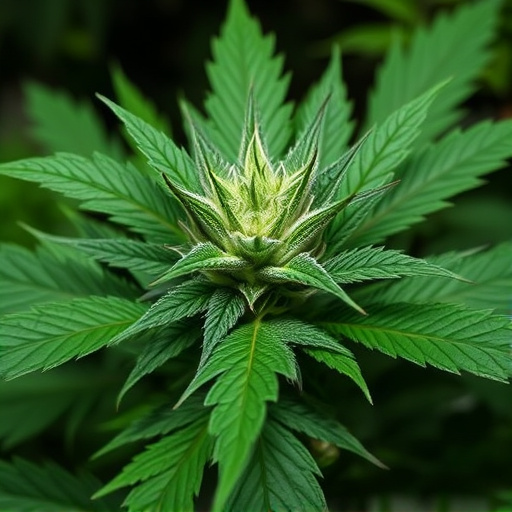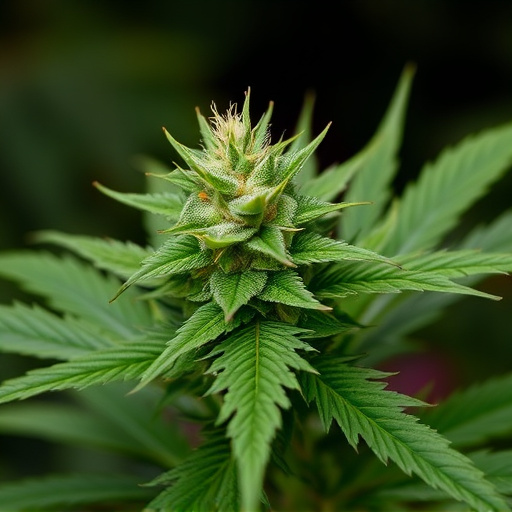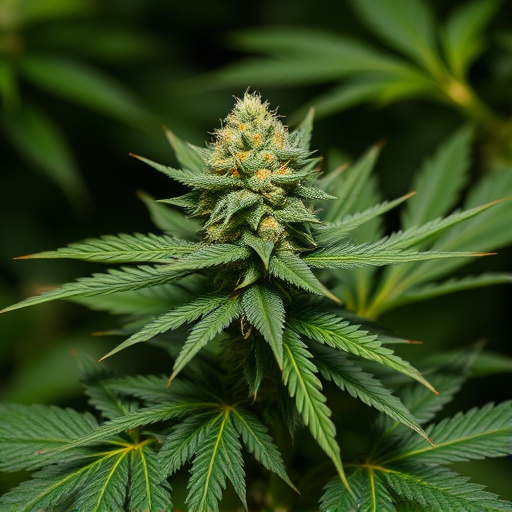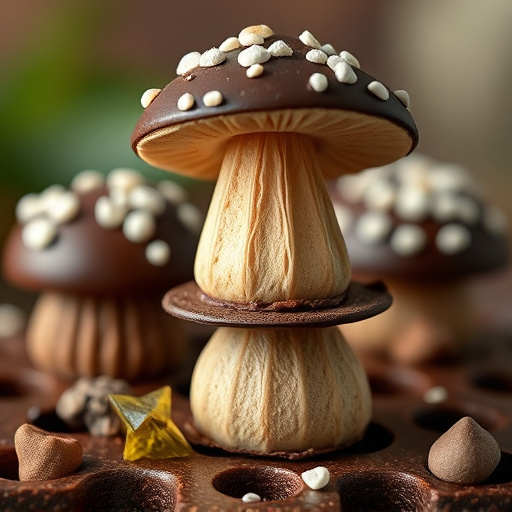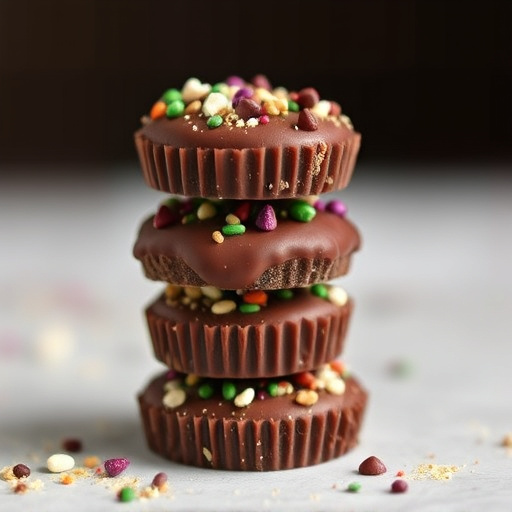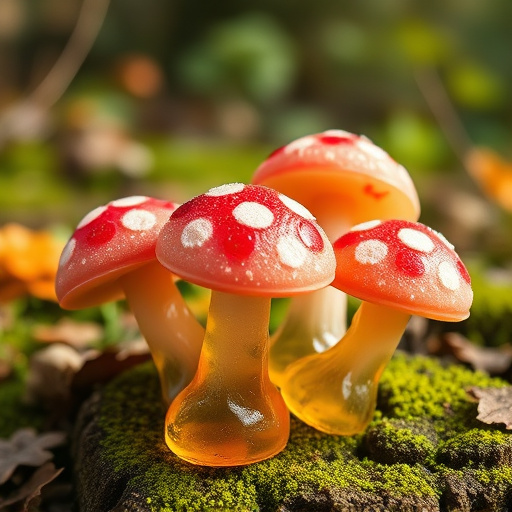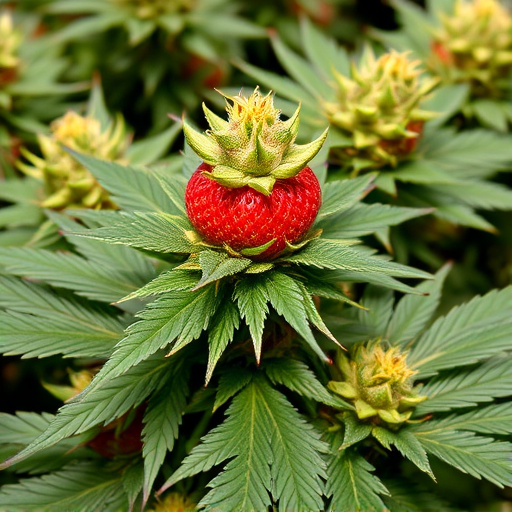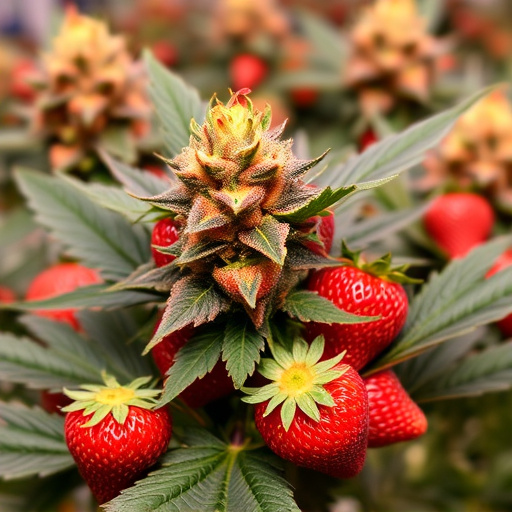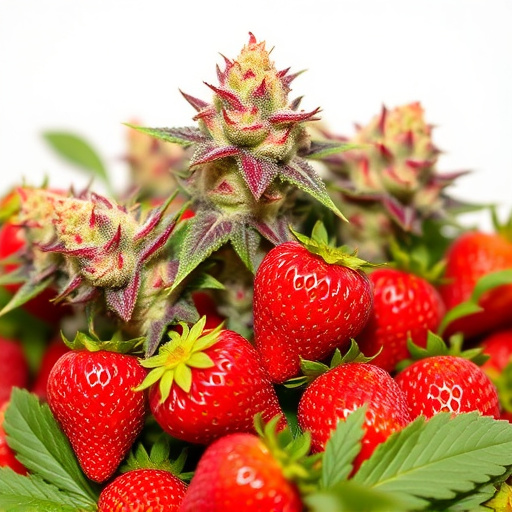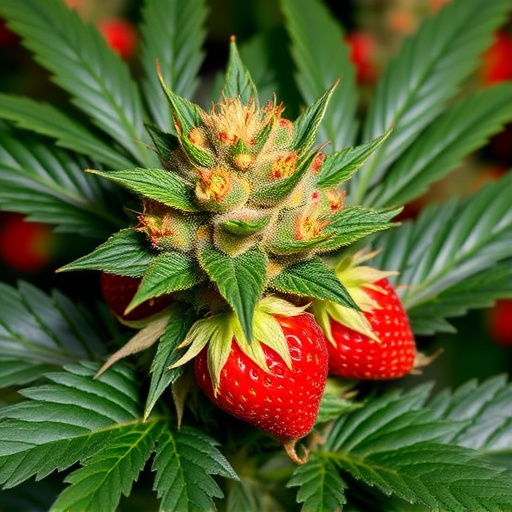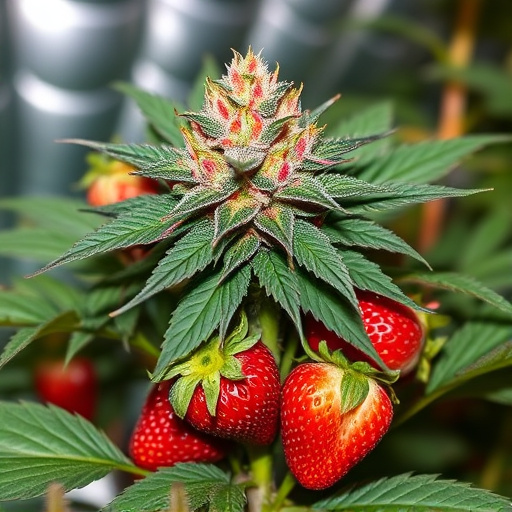Strawberry cannabis strains flourish in both indoor and outdoor environments, each offering unique benefits. Indoor cultivation provides controlled conditions for precise adjustments to lighting, temperature, humidity, and nutrients, resulting in consistent quality, enhanced flavor profiles, and higher terpene production. Outdoor cultivation leverages natural elements like sunlight, terroir, and richer soil, leading to varied flavors and robust, earthy aromas that reflect their natural surroundings. Both methods cater to different preferences, with indoor ideal for consistent high-quality plants and outdoor emphasizing aromatic profiles and diverse medicinal properties of strawberry cannabis strains.
Explore the captivating world of cannabis cultivation, focusing on the distinct differences between indoor and outdoor-grown flowers. Uncover how environmental factors shape not just the physical appearance but also the unique flavors and aromas of your favorite strains, including the enchanting strawberry cannabis varieties. From cultivation methods to harvesting techniques, this guide delves into the art behind cultivating optimal cannabis blooms, revealing why understanding these differences is key for enthusiasts and cultivators alike.
- Growth Environment: The Key Distinguisher
- – Outdoor vs indoor cultivation methods
- – Environmental factors influencing flower development
Growth Environment: The Key Distinguisher
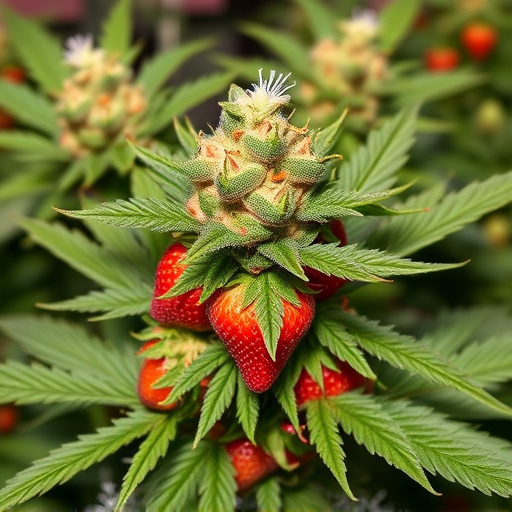
The growth environment plays a pivotal role in distinguishing between indoor and outdoor cannabis flowers, with one being the quintessential “strawberry cannabis” experience. Indoor cultivation involves controlled settings where growers meticulously monitor lighting, temperature, humidity, and nutrient delivery. This method allows for precise environmental adjustments, enabling specific strawberry cannabis strains to reach their full potential. The result is often a richer flavor profile, higher terpene production, and consistent quality.
In contrast, outdoor cannabis plants thrive in natural sunlight, fresh air, and unaltered climates. Growers let nature take its course, allowing the plants to grow at their own pace. Outdoor conditions can lead to a more varied flavor experience, as strawberry cannabis strains may develop unique characteristics influenced by regional terroir. While indoor cannabis tends to offer more consistent yields and potency, outdoor-grown plants often impress with their robust, earthy aromas and flavors that reflect their natural surroundings.
– Outdoor vs indoor cultivation methods

Cannabis cultivation has evolved significantly, offering growers both outdoor and indoor options for cultivating their plants. The primary distinction lies in the environment where the cannabis flowers (also known as buds) are grown. Outdoor cultivation leverages natural sunlight, fresh air, and often richer soil from outdoor environments. Growers carefully select locations with suitable climates, ensuring adequate space between plants to facilitate proper airflow and sunlight exposure. This method is particularly appealing for strawberry cannabis strains, renowned for their robust, aromatic profiles when grown in lush, outdoor settings.
In contrast, indoor cultivation involves controlled environments using advanced lighting systems, climate control, and nutrient-rich soils. Growers meticulously monitor and adjust factors like light intensity, temperature, humidity, and feeding schedules to create optimal growing conditions. While indoor cultivation may not replicate the complexity of outdoor environments, it offers greater control over variables that impact plant growth and cannabinoid production. This makes indoor-grown cannabis, including strawberry strains, consistently high in quality and potent.
– Environmental factors influencing flower development
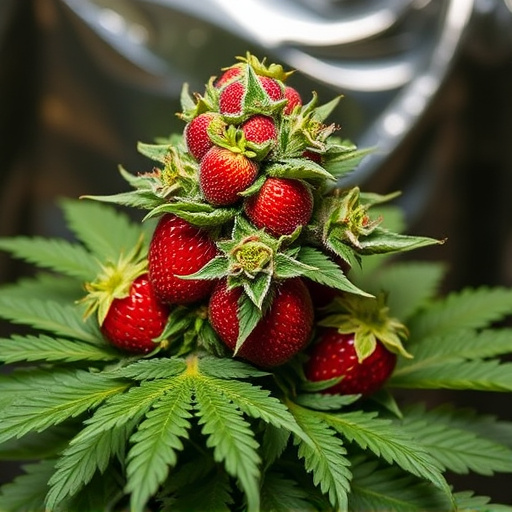
The environment plays a pivotal role in shaping the characteristics of cannabis flowers, be it indoor or outdoor grown. For Strawberry cannabis strains, this is particularly evident. When cultivated indoors, growers can meticulously control factors like light intensity and duration, temperature, humidity, and CO2 levels. This controlled environment allows for precise manipulation of the plant’s growth cycle, often leading to faster flowering times and enhanced terpene profiles. Indoor cultivation also offers protection from unpredictable outdoor conditions, ensuring consistent quality.
In contrast, outdoor cannabis plants are at the mercy of nature. They are exposed to varying light cycles throughout the seasons, with longer days in summer triggering blooming. Natural elements like rainfall, sunlight intensity, and temperature fluctuations can significantly impact flower development. Outdoor strawberry strains may take longer to mature but often develop more robust flavors and aromas due to the wider range of environmental influences. This natural setting also encourages a broader array of terpene expressions, contributing to diverse medicinal properties and unique consumer experiences.
In conclusion, understanding the difference between indoor and outdoor-grown cannabis flowers is essential for cultivators and enthusiasts alike. The growth environment plays a pivotal role in shaping the final product, including characteristics like aroma, flavor, and potency. For those seeking the unique profiles of strawberry cannabis strains, recognizing these distinctions can enhance their overall experience, as each cultivation method contributes distinct traits to the bouquet and effects of these sought-after varieties.
